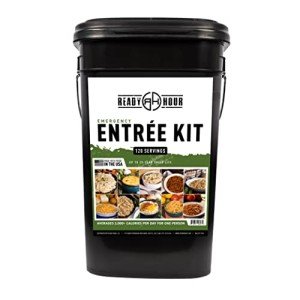When preparing for unexpected situations, having the right staples in your pantry can make all the difference. A well-stocked emergency pantry provides not only nourishment but also peace of mind. So, what should your emergency pantry look like? Start with these essential items that can sustain you and your family during difficult times.
Canned goods are a must-have for any emergency pantry. Items like canned vegetables, beans, soups, and fruits offer long shelf life and can be easily incorporated into meals. They provide important nutrients and can serve as the base for a variety of dishes. Don’t forget to include low-sodium options to help maintain a healthier diet!
Next, consider including dry goods such as rice, pasta, and oats. These staples are not only filling but also versatile. You can whip up many recipes using just a few ingredients, making them perfect for emergency cooking. Additionally, include a selection of grains like quinoa or bulgur for added variety and nutritional benefits.
Also important in your pantry are healthy fats, such as olive oil and nut butters. These items are great sources of energy and can enhance the flavors of your meals. Nut butters can be eaten on their own or spread on whole grain bread for a quick and satisfying snack.
Finally, don't forget about essential spices and condiments. Salt, pepper, dried herbs, and sauces can transform simple ingredients into delicious meals, allowing you to make the most out of what you have on hand. Having these flavors in your emergency pantry will keep your meals exciting, even when you’re relying on non-perishable items.
Proteins to Stock Up On
When preparing your emergency pantry, one of the key elements to consider is protein. Proteins are essential for maintaining muscle mass and overall health, especially during stressful situations. But what should your emergency pantry look like? Stocking up on a variety of protein sources ensures you and your family have the nutrition you need when it matters most.
One great protein option is canned beans. Not only are they packed with protein, but they also provide fiber and essential nutrients. Look for varieties like black beans, chickpeas, and kidney beans. They can be easily incorporated into soups, stews, or even salads, making them versatile in your meal planning.
Another excellent protein source to consider is canned tuna or salmon. These fish are rich in omega-3 fatty acids, which are beneficial for heart health. They are also easy to store and can be added to various dishes or eaten straight from the can for a quick protein boost. For a vegetarian option, consider stocking up on nuts and nut butters. They provide healthy fats, protein, and are perfect for snacking or adding to smoothies.
Don't forget about dehydrated or freeze-dried meals! Many of these options are high in protein and can be just the right answer during an emergency. They usually have a long shelf life, making them perfect for an emergency pantry. With a little preparation, you can be ready for whatever comes your way—so make sure to include a variety of protein sources in your checklist!
Grains That Last Long
Rice is a standout option when it comes to shelf-stable grains. White rice, in particular, can be stored for up to 30 years if kept in airtight containers in a cool, dark place. This staple food is incredibly easy to cook and can be paired with various side dishes, making it a popular choice among prepper enthusiasts. Consider adding brown rice to your pantry as well, although it has a shorter shelf life of about six months because of its oil content.
Another fantastic grain to include is quinoa. This nutritious seed is packed with protein and essential amino acids. Quinoa can last around 2 to 3 years when stored properly. It's gluten-free and cooks quickly, adding to its convenience in times of need. Additionally, oats are an excellent addition; rolled oats can last up to 30 years in sealed containers. Oats are not only great for breakfast but can also be used in various recipes for snacks and meals.
Finally, consider including whole wheat and pasta in your emergency pantry. Whole wheat flour can be stored for about 5 to 10 years, and dried pasta can last for 8 to 10 years if kept in a cool, dry place. These grains provide energy and can be transformed into countless dishes, making them indispensable in your pantry prep. By selecting the right grains, you'll not only enhance your emergency meals but also ensure that your pantry is stocked with food that can last the test of time.
Essential Condiments and Spices
First, consider adding some basic condiments like soy sauce, vinegar, and mustard. Soy sauce can be a great addition to rice and canned vegetables, lending a savory umami flavor. Vinegar, whether it's apple cider, white, or balsamic, can be used to dress salads, preserve foods, and even as a cleaning agent. Mustard can add a tangy kick to sandwiches and salads, making your meals more exciting even in an emergency.
Next, don’t overlook spices like garlic powder, onion powder, and black pepper. These staples allow you to build layers of flavor in your cooking without the need for fresh ingredients. Garlic and onion powder can easily be sprinkled into stews, soups, or rice dishes to give them a robust taste. Black pepper adds a touch of heat and enhances the overall flavor profile of any dish, making it a must-have in your pantry.
Lastly, consider stocking herbs such as dried oregano, basil, and thyme. These dried herbs can elevate your meals with minimal effort. They work well in sauces, soups, and casseroles, making them versatile options for your emergency cooking toolkit. By having a selection of essential condiments and spices on hand, you can ensure that your emergency pantry is well-equipped to meet your culinary needs.




